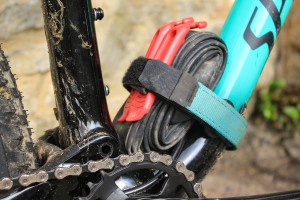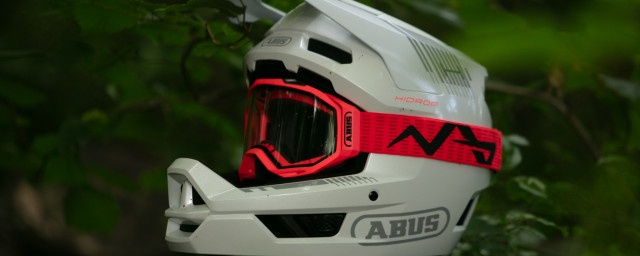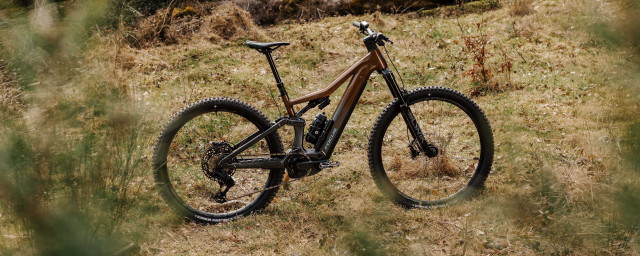
- Small pack size
- Comfortable
- Easy to inflate and deflate
- Not as light as some
The Cloud Base sleeping mat from British company Alpkit can be packed down to a small size, making it a good choice for bikepacking – although it's not the lightest. It blows up thin but is still comfortable, and it's well made.
- Alpkit Soloist Backpacking Tent review
- Best bikepacking frame bags for gravel bikes - tried and tested packs that are the best you can buy
- off.road.cc adventures: Elan Valley bikepacking bothy trip
For bikepacking, the restriction on how much you can carry can have a big impact on what you take, which can then have an impact on comfort and sleep. The Cloud Base manages to create a platform that makes it a good choice and at a wallet-friendly £38.
Inflating the mat is quick and doesn't take much effort, which is a plus at the end of a day riding. The one-way valve means you don't have to worry about air leaking out as you are trying to inflate. To deflate, the valve can be pushed in, allowing all the air to escape as you roll it up and pack away.
The Cloud Base is 5cm thick when fully inflated, which might not sound much, but I found it enough to be comfortable and sleep well. The diamond-shaped pattern works well and helps flatten uneven ground beneath you.
The length is generous, and should be suitable for most people – when inflated it measures 189cm (6ft 2”). There are no other length options, though.
The big plus for the Cloud Base is the size when packed (quoted as 28x8cm), which is roughly the size of a 750ml bottle. The weight might not be class-leading, but at 492g without the bag it's certainly not heavy.
While the storage bag is fine and plenty big enough, it's easily dispensed with.
For a low budget but comfortable sleeping mat, the Alpkit Cloud Base hits a really good compromise. As a comparison, the smaller ThermaRest NeoAir Xlite Regular is only 350g, but costs £160.
At the other extreme a closed-cell mat can be cheaper, such as the Exped FlexMat M at £28, but it can't pack down like an inflatable mat – key when bikepacking, as space is perhaps even more important than weight.
Overall the Alpkit Cloud Base offers good comfort, reasonably low weight and low volume pack size at a price that beats all the competition.












7 comments
The Cloudbase is, I think, the same mat as the Robens Vapour 60 which has the following spec:
R-Value: 1.6 (6°C)
Pack size: 27 x 8 cm
Weight: 425 g
It's worth being very careful with R-values generally: there are different Thermarest NeoAir models with different R-values. There are also different websites that quote different figures. The current rating system is new enough (2020) that you can assume that some websites may be using older values.
he ultralightoutdoorgear website gives a useful summary. The quality of Thermarest's website suggests they should be up to speed, but being a US company, it is possible they are still referring to the US scale not the ASTM system. Until it is more embedded, I personally take the whole system with a pinch of salt, just as you would with "seasons" ratings. Comparisons that amount to more than a frst-time Youtuber doing an unboxing can be useful to get an idea.
But if you have a mat that doesn't keep the heat in sufficiently (but is otherwise comfortable enough to be worth keeping for summer), a cheap fix is to use radiator backing foil that can be rolled around, say, a tent/poles bag, or folded against the back of a pannier. A bulkier way is to add a traditional foam roll mat with foil backing - cheap, light as anything, but a bit bulky (probably the reason you went for an air may in the forst place). R-values add up. In simple terms, two mats of R-value 2 gives you a total R-value of c.4.
While I appreciate the R-Value might be useful as a guideline there are a few issues.
Firstly, the testing process changed recently so for the same mat, some bags will see the number drop which can make comparisons triclky. Also, they are conducted in-house by manufacturers and in lab settings, which doesn't mimic real world outdoor conditions.
The R values of these inflatable mats aren't usually that good unless there's a filling like the exped down mat or exped syn mat. These are obviously much heavier and pack down larger and cost twice the price.
The thermarest neo air is a similar products to this alpkit mat in that there's no filling and that gets a r value of 2.2.
The problem with the Alpkit Claud Base is that there is no mention of the R-Value (and they don't seem to know either) which is kind of important in colder weather.